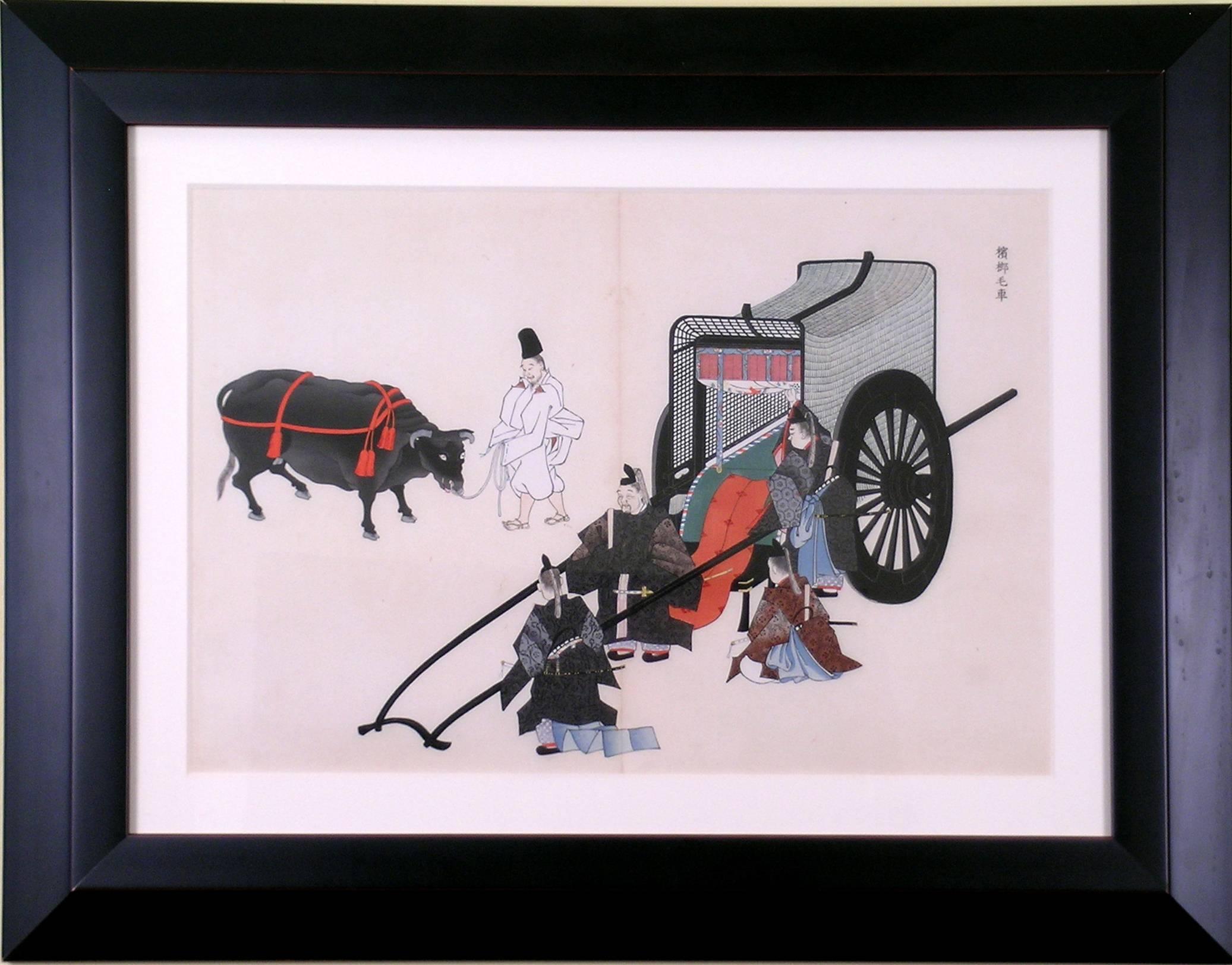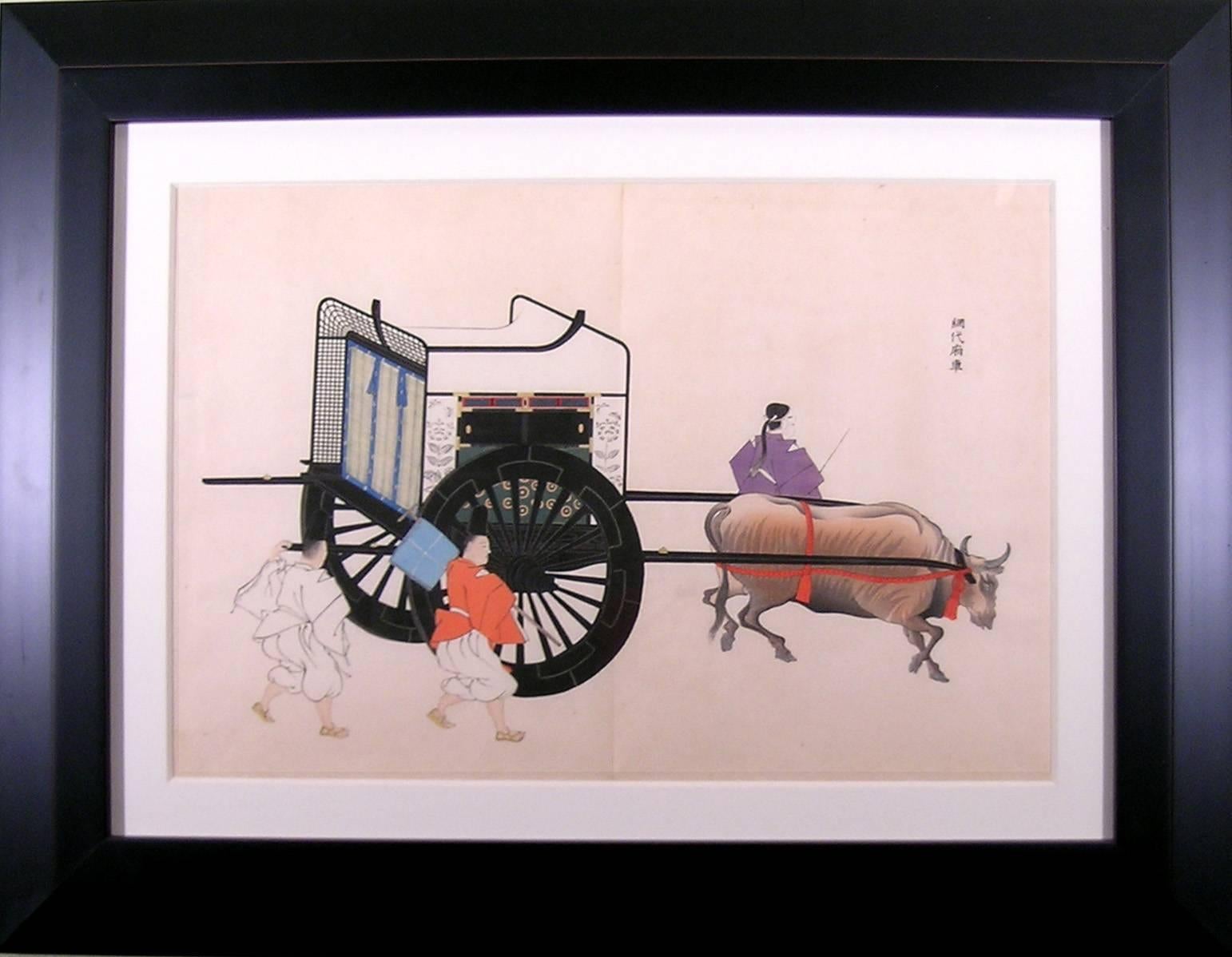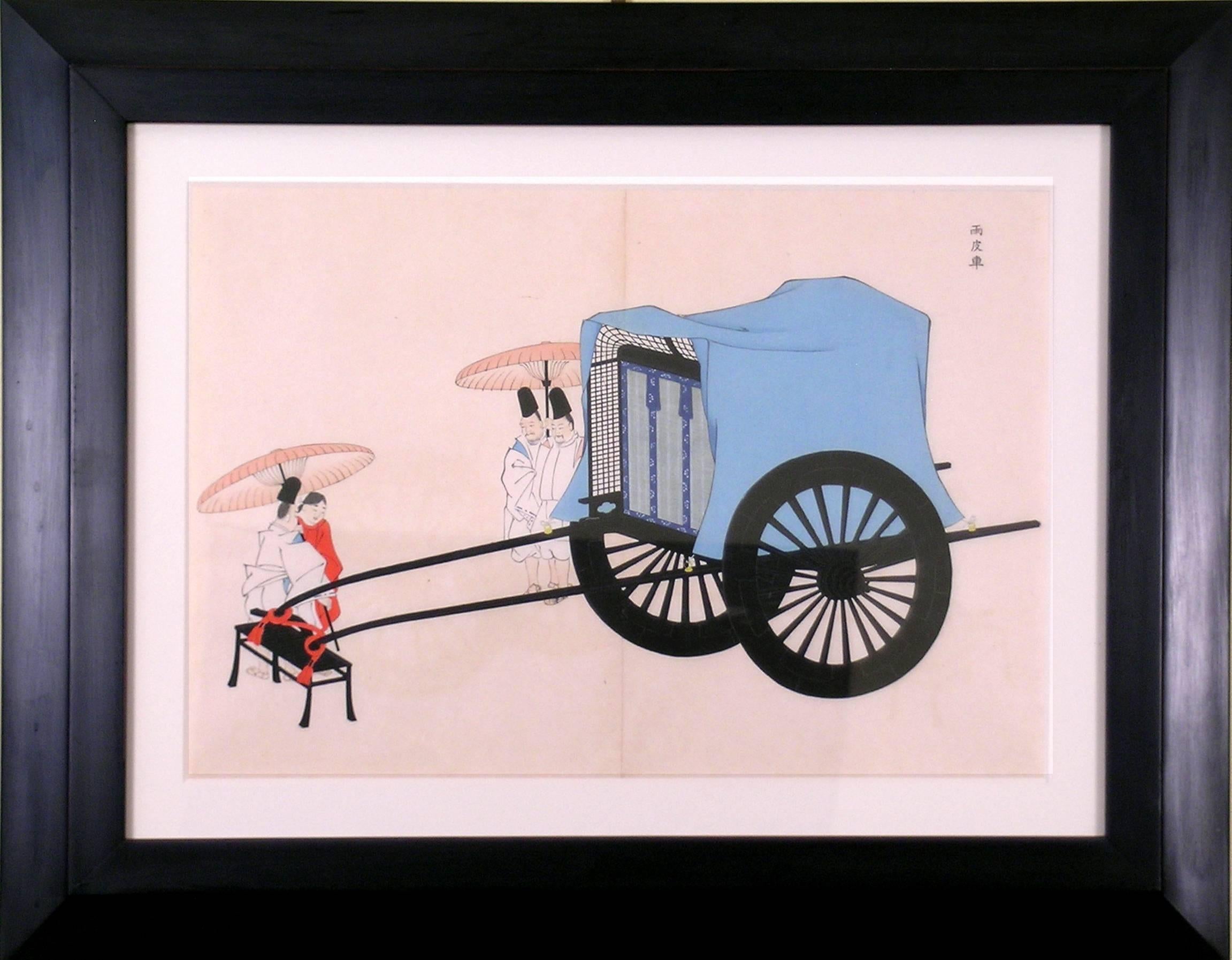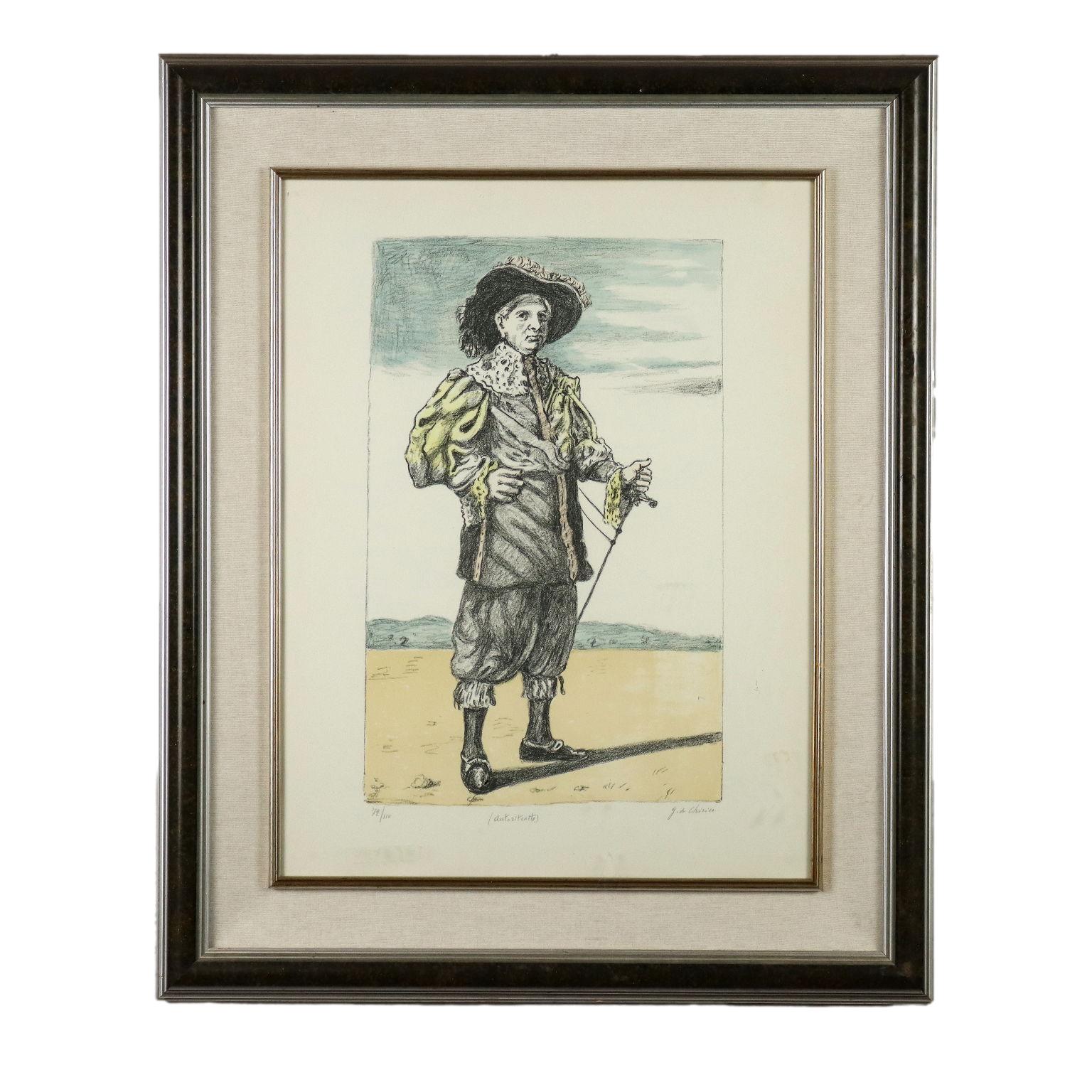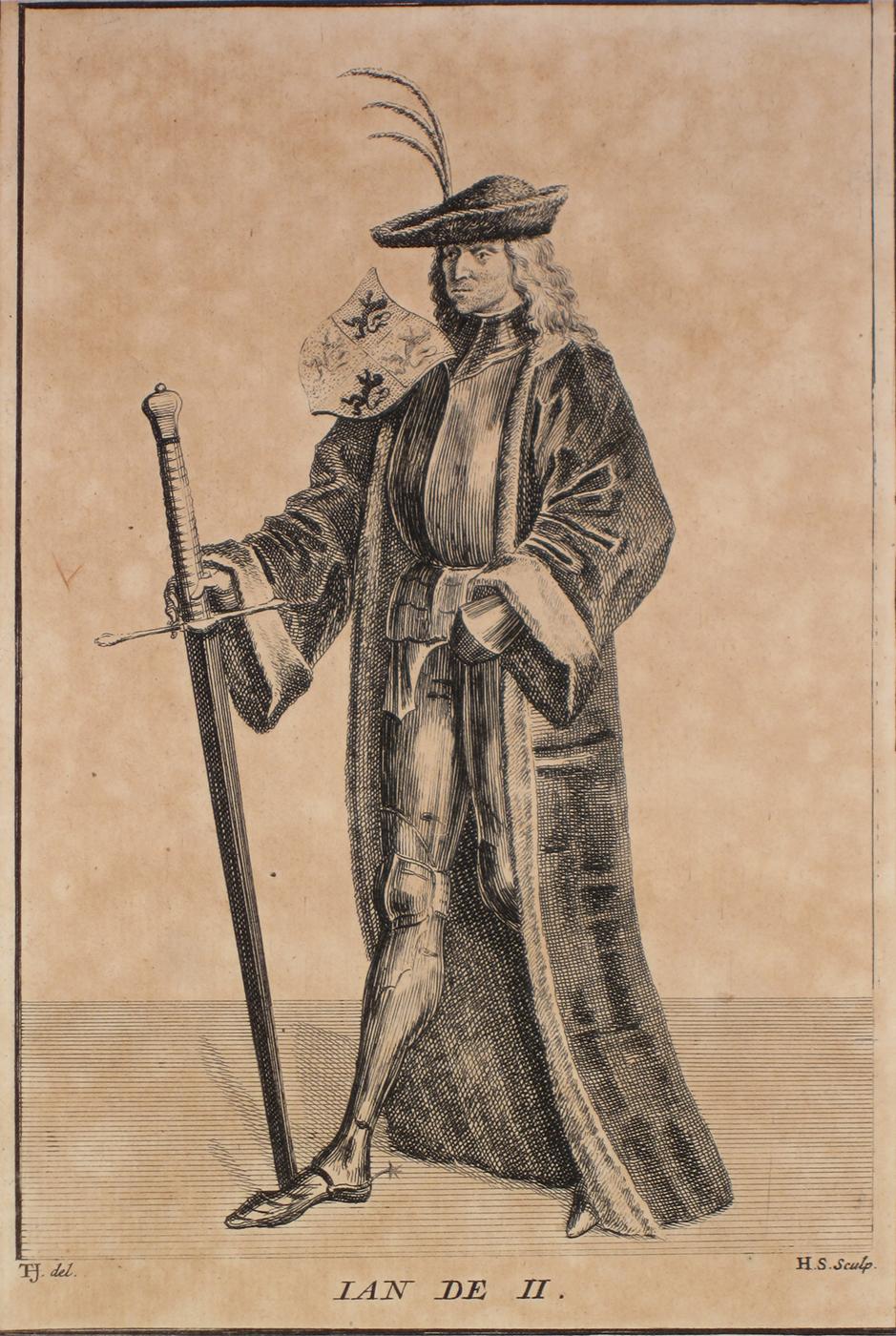Items Similar to The Plan
Want more images or videos?
Request additional images or videos from the seller
UnknownThe Plan1900
1900
About the Item
Samurai Warriors
Meiji 33 ( 1900)
Woodblocks
Original Hand-Color
Woodblock printing flowered in the Edo Period in Japan, mid to late 19th century, and is still considered an art form of great precision and beauty. This style captures both the vitality and life inherent to the flower. Following the artist’s sketch, an image is carved into a block of wood to be transferred to paper in the same manner in which a painter applies his art to a canvas. Black inks form the outline of the flower and color inks are applied following nature’s guide. The woodblock is then pressed to hand-made screened paper which is then hung to dry. This lengthy process of composing a single image can take weeks. These images reflect a quality similar to watercolor and graphite resulting in a stunning and life-like portrayal.
Samurai were the military nobility of medieval and early-modern Japan. According to translator William Scott Wilson, "In Chinese, the written character was originally a verb meaning to wait upon or accompany persons in the upper ranks of society.” This is also true of the original term in Japanese, saburau. In both countries the terms were nominalized to mean "those who serve in close attendance to the nobility. According to Wilson, an early reference to the word "samurai" appears in the Kokin Washu (905–914), the first imperial anthology of poems, completed in the first part of the 10th century.[1]
By the end of the 12th century, samurai became almost entirely synonymous with bushi, and the word was closely associated with the middle and upper echelons of the warrior class. The samurai followed a set of rules that came to be known as bushido. While the samurai numbered less than 10% of Japan's population, [2] their teachings can still be found today in both everyday life and in modern Japanese martial arts.
- Creation Year:1900
- Dimensions:Height: 17 in (43.18 cm)Width: 19.5 in (49.53 cm)
- Medium:
- Movement & Style:
- Period:
- Condition:Framed to museum specifications using archival matting, backing, hinging. Hand-cut decorative mat opening. Hand-painted decorative mat opening. Glazed with ultra-violet filtering Plexiglas.
- Gallery Location:Florham Park, NJ
- Reference Number:
About the Seller
5.0
Vetted Seller
These experienced sellers undergo a comprehensive evaluation by our team of in-house experts.
1stDibs seller since 2014
161 sales on 1stDibs
Typical response time: 2 hours
- ShippingRetrieving quote...Ships From: Florham Park, NJ
- Return PolicyA return for this item may be initiated within 1 day of delivery.
More From This SellerView All
- Oxcart with 5 Men and 1 OxBy Yosha Zuko FuzuLocated in Florham Park, NJYosha Zuko Fuzu Meiji 33 (1900) Woodblock with Original Hand-Coloring Writer: Kosugi Onson, Imaizumi Teisuke Publisher: Yoshikawa Hanshichi The Japanese litters and palanquins...Category
Early 1900s Academic Figurative Prints
MaterialsWoodcut, Watercolor
- Oxcart with 3 MenBy Yosha Zuko FuzuLocated in Florham Park, NJYosha Zuko Fuzu Meiji 33 (1900) Woodblock with Original Hand-Coloring Writer: Kosugi Onson, Imaizumi Teisuke Publisher: Yoshikawa Hanshichi The Japanese litters and palanquins...Category
Early 1900s Academic Figurative Prints
MaterialsWoodcut, Watercolor
- Transport with 5 People and 2 ParasolsBy Yosha Zuko FuzuLocated in Florham Park, NJYosha Zuko Fuzu Meiji 33 (1900) Woodcut with Original Hand-Coloring Writer: Kosugi Onson, Imaizumi Teisuke Publisher: Yoshikawa Hanshichi The Japanese litters and palanquins a...Category
Early 1900s Academic Figurative Prints
MaterialsWoodcut
- Templum Iovis Romae (Temple of Jove)Located in Florham Park, NJBeautifully hand-colored lithograph illustrating Roman architecture.Category
1750s Figurative Prints
MaterialsLithograph, Watercolor
- Red Men's Kimono DesignBy Matsui YuokuLocated in Florham Park, NJREISHIN GACHO (Album of Beautiful Designs) Japanese Kimono Designs Matsui Yuoku, Painter Japan, 1900 (Meiji 33) Honda Ichijirou, Publisher Woodblock P...Category
Early 1900s Academic Prints and Multiples
MaterialsWoodcut, Watercolor
- HawkBy Kono BaireiLocated in Florham Park, NJKono Bairei (1844 – 1895) Kacho-ga. (Birds and Flowers) Japan, c1880 Woodblock Print. 15 x 11. Okura Magobei, Publisher. The enthusiasm for nature prints transcends the centuries. “One Hundred Flowers” is a mid-nineteenth century work illustrating varieties of flowers in naturalistic styles. Traditional woodblock printing enhances the beauty of each work. The artist must carve different woodblocks for every color he wishes to transfer to paper. In this style of printing it is imperative that the register of each woodblock be exact as they must match perfectly to create an image without blurring. In addition to his illustrated flower books...Category
Late 19th Century Academic Prints and Multiples
MaterialsWoodcut, Watercolor
You May Also Like
- Giorgio De Chirico ( 1888 – 1978 ) – Autoritratto – hand-signed lithograph –1970By Giorgio De ChiricoLocated in Varese, ITOriginal color lithograph , edited in 1970 limited edition signed in pencil in lower right corner and numbered as: 72/110 paper size: 70 x 53,5 cm framed size: 93,5 x 77 cm ( origina...Category
1970s Academic Prints and Multiples
MaterialsLithograph, Paper
- The United StatesLocated in Sydney, NSW19th Century chromolithograph, The United States (Vanity Fair), under the pseudonym of ApeCategory
19th Century Academic Figurative Prints
MaterialsLithograph
- John II, Count of Hainaut Holland & Zeeland (1247-1304)Located in Sydney, NSW18th Century (c1740) etching/engraving , John II, Count of Hainaut Holland & Zeeland (1247-1304)Category
19th Century Academic Figurative Prints
MaterialsEngraving, Etching
- Flowering Iris & Other Botanicals: Framed 17th C. Besler Hand-colored EngravingLocated in Alamo, CAThis is a hand-colored copper-plate engraving entitled "I. Spatula foetida - II. Caucalis Dodonei - III. Cruciata", depicting three flowering plants, including an Iris, from Basilius Besler's landmark work, Hortus Eystettensis (Garden at Eichstatt), first published in 1613 in Eichstatt, Germany near Nuremberg and later in 1640 and 1713. This beautiful hand-colored botanical engraving is presented in a gold-colored wood frame with a French mat...Category
Mid-17th Century Academic Still-life Prints
MaterialsEngraving
- Flowering Feverfew Plants: A 17th C. Besler Hand-colored Botanical EngravingLocated in Alamo, CAThis is a hand-colored copper plate engraving entitled "Matricaria Flore Simplici, Matricaria Flore Pleno, depicting flowering Feverfew and Double-flowered Feverfew plants, from Basilius Besler's landmark work, Hortus Eystettensis (Garden at Eichstatt), first published in 1613 in Eichstatt, Germany near Nuremberg and later in 1640 and 1713. The feverfew plant is also known as featherfew, featherfoil, or bachelor’s buttons...Category
1640s Academic Still-life Prints
MaterialsEngraving
- Flowering Lily Plants: A 17th C. Besler Hand-colored Botanical EngravingLocated in Alamo, CAThis is a hand-colored copper plate engraving entitled "Cataputia Vulgaris, Parietaria Sylvestris, Nummularia", depicting flowering Spanish Nut, Yellow Turk's-cap Lily, Yellow Turk's...Category
1640s Academic Still-life Prints
MaterialsEngraving
Recently Viewed
View AllMore Ways To Browse
Wood Plan
Antique Plan
Antique Plans
The Warriors
The Word Antique
Japanese Woodblock Beauties
Japanese Wood Block Prints
Wood Block Prints Japan
Antique Wood Print Blocks
Chinese Woodblock
Antique Japanese Watercolor
Wood Block Still Life
Meiji Woodblock
Antique Pressed Flowers
China Woodcut
Chinese Woodcut
Japanese Warrior Woodblock Print
Samurai China
